Shotgun (87th Precinct) Read online
Page 2
“It scares you, you know?” Novello said. “A thing like that.”
Because taking the fingerprints of a suicide or homicide victim is mandatory, someone inherited the pleasant task of holding hands with two separate corpses that Saturday morning.
The someone was a laboratory technician named Detective 3rd/Grade Marshall Davies. He was a new technician, and he generally got the crumby jobs like picking glass headlight slivers out of a dead accident victim’s back, or vacuuming the clothes of a man who’d been hit seven times with a hatchet, or—like now—fingerprinting corpses.
Fresh dead bodies are easier to fingerprint than those that have been around awhile. That’s one of the small consolations in this racket, Davies thought as he worked, the knowledge that all you have to do with a fresh dead body, where the fingers haven’t yet clenched up, is apply the ink directly to each separate finger, comme-ça! (he applied the ink to Rose Leyden’s extended forefinger, using a small roller), and then take your impression with paper attached to a spoon-shaped piece of wood, voilà, he thought, stop it, you’re not even French. Nine fingers to go on the lady, he thought, or, to be precise, seven fingers and two thumbs. We then administer to the gentleman in his undershorts in the bedroom, some job. My mother said I should become an accountant, but I said, No, Mama, police work is exciting. So here’s Saturday morning, and Detective 3rd/Grade Marshall Davies is taking fingerprints from dead people, instead of playing ball in the park with his three-year-old son. Come on, lady, give me your ring finger.
He studied the ring on the third finger of her left hand. It was an ornately carved gold wedding band, very pretty, it would go into the estate of Rose Leyden, some relative would claim it, together with all her other worldly possessions, what a goddamn waste death was.
“How we doing there?” a voice behind him asked.
Detective 3rd/Grade Marshall Davies, Police Laboratory, looked up and over his shoulder into the face of Detective 3rd/Grade Richard Genero, 87th Squad. Genero was a new detective, too, having been promoted from patrolman only this past April after cracking a case in which two young hoodlums were running around setting fire to drunken vagrants. He was the youngest detective on the squad, and the greenest, and so he got all the lousy jobs nobody else wanted, like hanging around an apartment and watching new laboratory technicians fingerprint corpses.
“Oh, so-so,” Davies said, thinking he did not need conversation with a flatfoot, not while he was busy with such gruesome work.
“What’s that thing there?” Genero asked.
Davies looked at him.
“There,” Genero said, as though repetition would make his question more meaningful.
“It’s a semilunar-shaped piece of wood,” Davies replied, and sighed.
“What’s it used for?”
Davies, who considered himself something of a wit, looked at Genero again, and then said, “Can’t you see I’m giving the lady a manicure?”
“Huh?” Genero said.
“Sure. I use this piece of wood to hold each finger while I paint her nails. What’d you think I used it for?”
“Gee, I don’t know,” Genero, who was something of a wit himself, replied. “I thought it was a wooden thermometer you were planning to shove up your ass.”
The two new detectives glared at each other.
“Buzz off,” Davies said flatly.
“My pleasure,” Genero said, and walked off steaming.
Goddamn flatfoot, Davies thought, got nothing to do but bother a man trying to do a day’s work. Diligently, he inked each of Rose Leyden’s fingers and thumbs, making his impressions, keeping the slips of paper separated and in sequence so that he could later mark each one according to finger. He sometimes wondered why the police bothered with fingerprints at all, especially in a case like this where it was obvious that the dead people were decent citizens living in a good neighborhood. Neither of them would have a police record, of course, and unless the guy had been in the armed forces at one time or another, his fingerprints would not be in the FBI files either. So what was the point? Did anyone ever stop to realize how many people in the United States, especially women, had never in their lives been fingerprinted? Of course not. This whole thing about fingerprints was something invented by the police in order to scare not criminals but civilians. The criminal doing a job knew that his prints already were on file someplace, or would be one day, so he wore gloves as a matter of course. The civilian committing a crime usually acted in the heat of passion, and when it’s hot you don’t wear gloves. But the civilian cracks under pressure more easily than the habitual criminal does, especially if the cops come out suddenly with a statement like, “And the fingerprints on the gun happen to match the fingerprints we found on your toothbrush in the bathroom, ah-ha, got you!” All bullshit, Davies thought, and continued fingerprinting a dead lady who, like most other ladies in America, dead or alive, had probably never had her prints taken before. It’s a shame the honor had to wait till now, Davies thought, when you’re laying stone-cold dead in your own living room, missing all of your face and part of your head, and soaked with blood and whatever other corruption, Jesus, I’ll be sick in a minute, Davies thought.
Do the job, he thought.
Stop thinking.
He stopped thinking, and he did the job.
The jewelry was spread on top of Carella’s desk, and the woman sitting opposite him studied it with a careful eye but said nothing.
Her name was Mrs. Gloria Leyden, and she was the widowed mother of Andrew Leyden, and she sat in corseted disbelief in the squadroom and looked at the jewelry and refused to commit herself because committing herself would be the same thing as acknowledging that her son was dead.
“Well?” Carella said.
“Well, what?” she answered. She was a red-faced woman with a pug nose and puffy cheeks. Her hair was a violet-white, neatly coiffed, her bosom as ample as a pouter pigeon’s, her eyes small and sharp and blue behind harlequin spectacles.
“Do you recognize any of this jewelry?”
“Why is it important that I recognize any of it?” Mrs. Leyden asked.
“Well,” Carella said, “we try to make a positive identification wherever possible. In a case like this, where the bodies—”
“It’s hard to tell anything from jewelry,” Mrs. Leyden said.
“Well, take this ring for example, it’s from the University of Wisconsin, and there’s a date inside it, June 1950, and also the engraved initials ALL. It was found on the right ring finger of the dead man, and I’m asking you now if you recognize it.”
“There are a lot of rings from the University of Wisconsin,” Mrs. Leyden said.
“Did your son go to the University of Wisconsin?”
“Yes.”
“When was he graduated?”
“In June of 1950.”
“And his name is Andrew Leyden?”
“Yes.”
“What’s his middle name?”
“Lloyd.”
“Then the initials in this ring, ALL, could be your son’s initials.”
“There are lots of people with the initials ALL.”
“Yes,” Carella said. “Well, how about this other ring, Mrs. Leyden? It was found on the man’s third finger left hand, and it’s obviously a wedding band. The woman was wearing the same ring, narrower and smaller of course, but the same design. Do you recognize this ring?”
“Who looks at rings?” Mrs. Leyden said.
“Well, it’s very nicely carved, and it’s an unusual wedding band, so perhaps you would have noticed if your son and daughter-in-law ever wore wedding bands similar to it.”
“Similar?”
“Identical to it,” Carella amended. “The other wedding band there was taken from the woman’s hand.” He pointed at it with a pencil.
“All wedding rings loo
k alike to me,” Mrs. Leyden said.
“This locket was around the dead woman’s neck,” Carella said. He lifted the locket, a gold heart on a slender gold chain. “There are two pictures in it,” he said, and opened the locket. “Do you recognize either of these people in the pictures?”
“Yes,” Mrs. Leyden said.
“Who are they?”
“The man is my son. The woman is my daughter-in-law.” Mrs. Leyden nodded. “That doesn’t mean either of them is dead,” she said.
“Mrs. Leyden—”
“I want to see the bodies.”
“They’re at the mortuary. I don’t think seeing the bodies is going to—”
“I want to see them. You’re telling me my son is dead, and you’re asking me to say, Yes, that’s his college ring, Yes, that’s his wedding band, Yes, that’s his picture in the locket there, you’re asking me to say he’s dead!”
“That’s right, Mrs. Leyden.”
“Show me his body,” Mrs. Leyden said. “Then I’ll tell you if he’s dead or not.”
“Both victims were shot at close range with a shotgun,” Carella said. “In the face.”
“Yes, you’ve already told me that.”
“Mrs. Leyden, a 12-gauge shotgun fired at close range doesn’t leave much—”
“I want to see the bodies,” Mrs. Leyden said.
“Okay,” Carella said, and sighed, and called downstairs for a car.
A hospital mortuary is never a cheerful place, but it is perhaps least cheerful on a Saturday afternoon. The weekend is not a good time for dying, you should never die anytime between Friday evening and Monday morning. Wednesday is the best day for dying except in some towns in Connecticut where even the barber shops are closed on Wednesday. But as a general rule, if you’re going to die, Wednesday is a nice day for it. This was Saturday, and a lot of people had inconsiderately and with absolutely no regard for the calendar died in the hospital that morning and had been taken downstairs to be put on ice. In addition, through assorted accidents and acts of violence, a lot of other people had died elsewhere in the city and had been transported to the hospital for autopsy and what-have-you; so the mortuary attendant had been very busy, and he didn’t need a cop coming around at 2:00 P.M. with a fat lady in a corset right when he was in the middle of reading a dirty book. The dirty book was a very good one, he was up to the part where they were whipping the girl and telling her she must never raise her eyes and must obey them and be ready at all times, it was a very good book.
“Leyden,” Carella said to the attendant, “Andrew and Rose.”
“We got no Leydens here,” the attendant said, “neither Andrew nor Rose.”
“They came in sometime this morning,” Carella said.
“I been here since eight o’clock this morning, and there ain’t no Leydens,” the attendant said.
“Well, check your list there,” Carella said.
“I looked at the list when I came on.”
“Well, look at it again.”
“I know every name on this list.”
“Pal…” Carella started.
“Okay, okay,” the attendant said, and put down his book, and studied the list and said, “Leyden, Andrew and Rose, is that it?”
“That’s it.”
“I musta missed them when I checked the list earlier.”
“Yeah, you must have.”
“Which one you want to see?”
“Both,” Carella said.
“They’re not together. I got the woman over here and the man over there.”
“Well, let’s see the woman first,” Carella said.
“Suit yourself, six of one, half a dozen of the other,” the attendant said, and rose, and led them across the room. The room was large and echoing, lighted with fluorescent, stinking of antiseptic. The name LEYDEN, ROSE was lettered in pencil on a cardboard tag that had been slipped into a holder on the small door set in a row of identical small doors. There was a handle on the door. The attendant grabbed the handle and opened the door, and a rush of cold air touched Carella’s face like a breath from the grave, and then the metal drawer came out a trifle on its ball-bearing rollers, and they looked down at the shattered head and missing face of the person they presumed was Rose Leyden. The attendant rolled the drawer out further, showing the woman’s naked body, the bloodstains still on her neck and breasts and belly. Beside him, Mrs. Gloria Leyden gasped and turned away.
“Is it your daughter-in-law?” Carella asked.
“Yes,” Mrs. Leyden said.
“How do you know?”
“The beauty spot.”
“Which beauty spot, ma’am?”
“On her…just above her breast. She…my son thought it was very attractive…it…you could see it whenever Rose wore anything low cut…it…that’s my daughter-in-law. That’s Rose.”
Carella nodded to the attendant, who rolled the drawer back into the refrigerator compartment, and then closed the door.
“Want to see the man?” he asked.
“Mrs. Leyden?”
“I don’t think I could bear it.”
“Then, Mrs. Leyden, can you tell me if your son had any scars or tattoos? Any visible markings on his body that—”
“What?” Mrs. Leyden said.
“Any scars or—”
“Yes, he had a tattoo.”
“Where would that be, Mrs. Leyden?”
“What? I’m sorry, what did you say?”
“The tattoo. Where…?”
“His arm. It was on his arm.”
“What sort of a tattoo?”
“A very simple one. He had it done when he was a boy. He must have been seventeen or eighteen. He’d been rejected by the service, you see, he had a punctured eardrum and…and I guess he wanted to feel grownup and…manly. So he had himself tattooed.”
“And what does the tattoo look like, Mrs. Leyden?”
“It’s a dagger. A dagger in blue outline. And across it, in red, is his name, Andy.”
“I see,” Carella said. “Would you…Mrs. Leyden, would you mind waiting here a moment, please?”
“Are you going to look to see if he…if the…if the man has a tattoo?”
“Yes.”
“It’s his left arm,” Mrs. Leyden said, and turned away.
Carella followed the attendant across the room to where the male corpses were stacked in their refrigerated compartments. “Leyden, Leyden, Leyden,” the attendant said, “here we are, Leyden,” and opened one of the doors and pulled out the drawer. The faceless dead man had a blue dagger, two inches long, tattooed on his left arm. The single word “Andy,” in red letters, ran horizontally across the blade of the dagger.
“Okay,” Carella said.
The attendant slid back the drawer. Carella walked across the room to where Mrs. Leyden was standing. She looked up at him.
“It’s your son,” he said.
Mrs. Leyden nodded and said nothing.
They began walking toward the exit door together. Carella was a tall man wearing a brown business suit, his hair brown, his eyes brown, a pained expression sitting on them now as he walked beside the small corseted lady with the large sloping bosom and the ridiculous violet-white hair, a ludicrous couple with nothing more in common than death. At the door, she stopped and put her hand on Carella’s arm and looked up into his face, and very softly said, “I think I will have to see him.”
“Mrs. Leyden—”
“Because if I don’t…if I don’t look at him and see for myself…I’ll never believe he’s dead. I don’t think I could bear going through life hoping he’ll suddenly turn the next corner.”
They went back across the room, their heels clicking on the vinyl-tile floor. The attendant rolled out the drawer and Mrs. Leyden looked into the open red and gaping ho
le in the head of the corpse that lay stiff and cold on the cold aluminum rack, and then the attendant pulled the drawer further out, and she looked at the corpse’s arm silently, and then reached out as though to trace the outline of the blue dagger with its red letters, but stopped her hand in mid-motion instead, and covered her face and said, “Yes, it’s my son, yes,” and began weeping.
There were wild prints in the apartment.
Most of the prints, as expected, belonged to the dead man and his wife, but there were other prints as well, wild prints that belonged to neither of them.
The wild prints had been left by someone with very large hands, presumably a man, but possibly a woman. The wild prints were on doorknobs and doorjambs, the wild prints were on a glass in the kitchen, the wild prints were on a dresser top. But most important, the wild prints were all over the shotgun. The third party who had been in that apartment on the night the Leydens were killed had roamed the place at will, gloveless, touching things freely and with apparent immunity, feeling confident enough to have left perfectly clear latent impressions on the shotgun stock and barrel, and a portion of a print on the trigger itself.
The laboratory technicians were jubilant.
They sent their prints over to the Bureau of Criminal Identification, the ones they had lifted from Rose and Andrew Leyden, and the ones they had discovered all over the apartment, the wild prints belonging to the big-handed man or woman who had possibly committed the murders. The BCI reported back late that afternoon, stating that they had no record for either Rose or Andrew Leyden, which was not surprising since neither of the pair had ever been arrested in their lives.
The case could have been solved that very afternoon if the BCI had come up with a make on the wild prints.
They didn’t.
It was a good October.
October is the best month anyway, but this October was a rare one. There had been only one rainy day at the very beginning of the month, and clear blue skies from then on, the breezes carrying just enough bite to make topcoats necessary, but never menacing, never threatening winter itself, even though it was just around the corner.

 Alice in Jeopardy: A Novel
Alice in Jeopardy: A Novel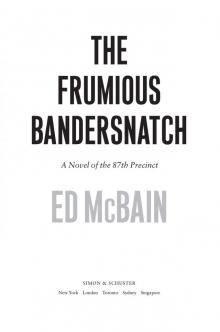 The Frumious Bandersnatch
The Frumious Bandersnatch The McBain Brief
The McBain Brief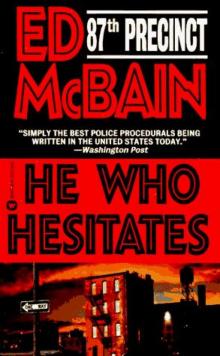 He Who Hesitates
He Who Hesitates Mischief
Mischief Fat Ollie's Book: A Novel of the 87th Precinct
Fat Ollie's Book: A Novel of the 87th Precinct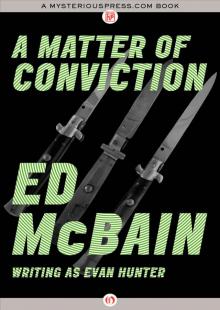 A Matter of Conviction
A Matter of Conviction Ice
Ice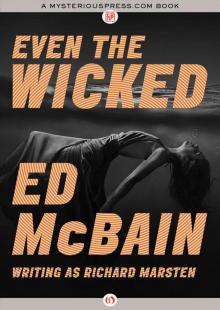 Even the Wicked
Even the Wicked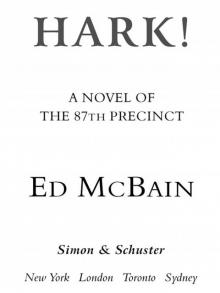 Hark!
Hark!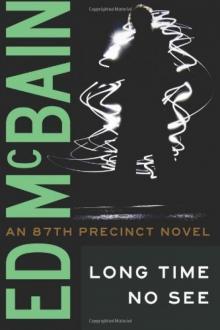 Long Time No See
Long Time No See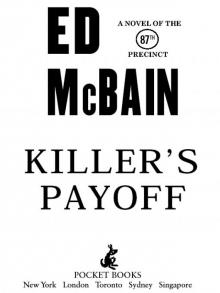 Killer's Payoff
Killer's Payoff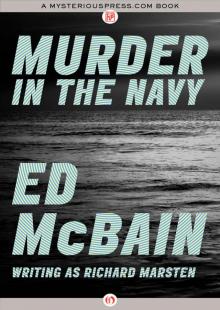 Murder in the Navy
Murder in the Navy A Horse’s Head
A Horse’s Head So Nude, So Dead
So Nude, So Dead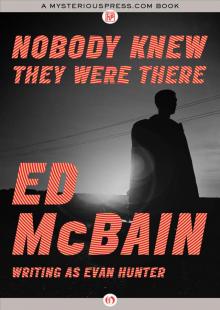 Nobody Knew They Were There
Nobody Knew They Were There Alice in Jeopardy
Alice in Jeopardy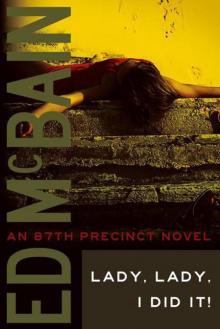 87P14-Lady, Lady, I Did It!
87P14-Lady, Lady, I Did It! Fuzz
Fuzz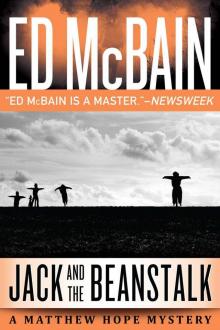 Jack and the Beanstalk (Matthew Hope)
Jack and the Beanstalk (Matthew Hope)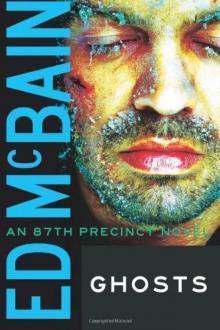 Ghosts
Ghosts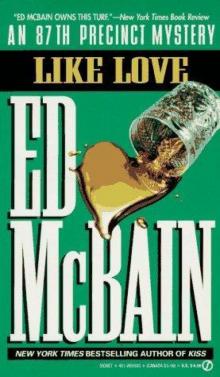 Like Love
Like Love Cut Me In (Hard Case Crime)
Cut Me In (Hard Case Crime)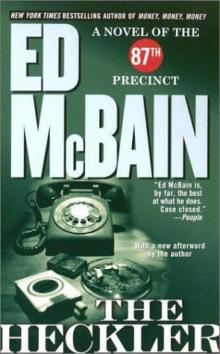 The Heckler
The Heckler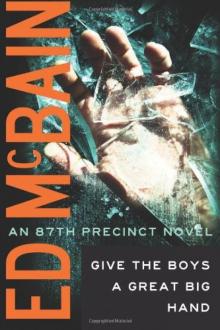 Give the Boys a Great Big Hand
Give the Boys a Great Big Hand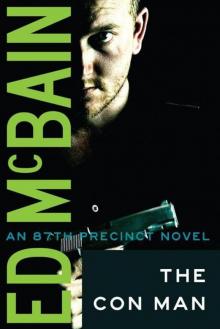 The Con Man
The Con Man Masters of Noir: Volume One
Masters of Noir: Volume One Money, Money, Money
Money, Money, Money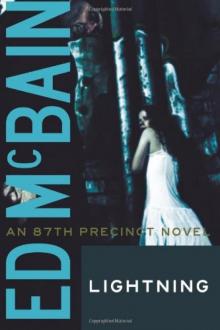 Lightning
Lightning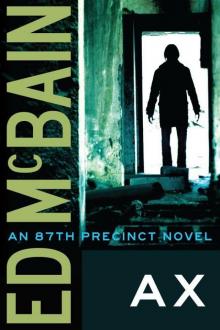 Ax
Ax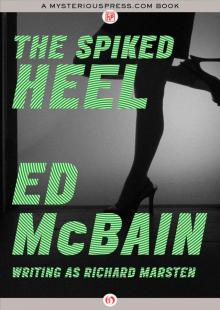 The Spiked Heel
The Spiked Heel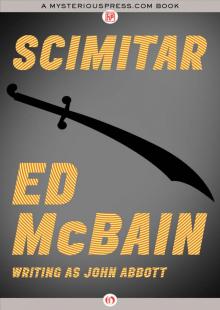 Scimitar
Scimitar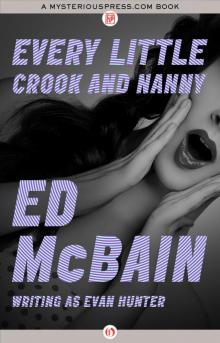 Every Little Crook and Nanny
Every Little Crook and Nanny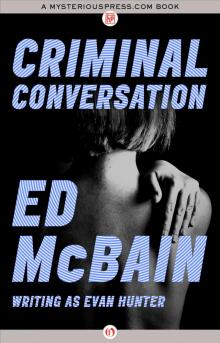 Criminal Conversation
Criminal Conversation Doors
Doors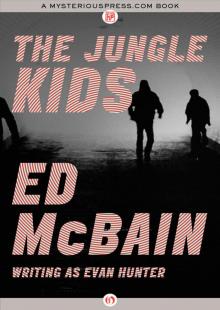 The Jungle Kids
The Jungle Kids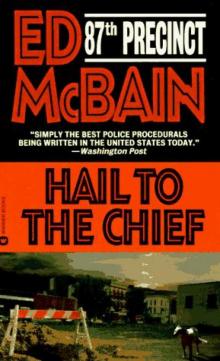 Hail to the Chief
Hail to the Chief Pusher
Pusher Killer's Choice
Killer's Choice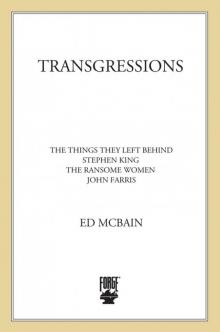 Transgressions Volume 2
Transgressions Volume 2 King's Ransom
King's Ransom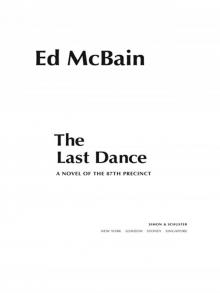 The Last Dance
The Last Dance Fiddlers
Fiddlers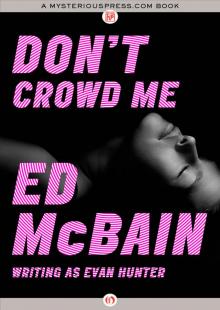 Don’t Crowd Me
Don’t Crowd Me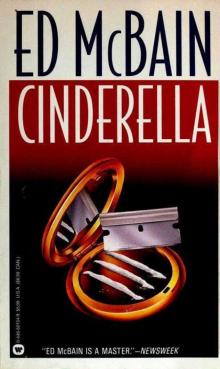 Cinderella
Cinderella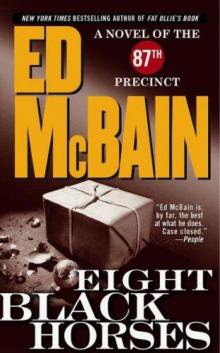 Eight Black Horses
Eight Black Horses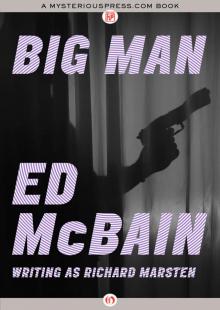 Big Man
Big Man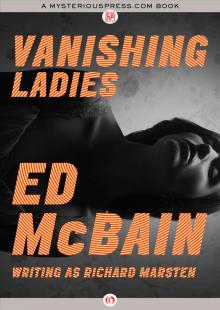 Vanishing Ladies
Vanishing Ladies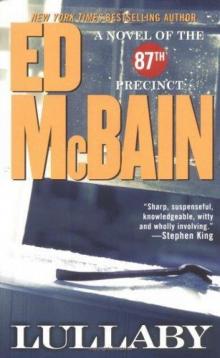 Lullaby
Lullaby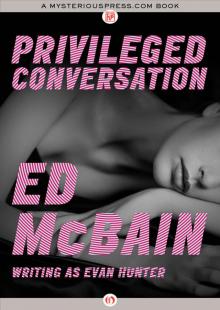 Privileged Conversation
Privileged Conversation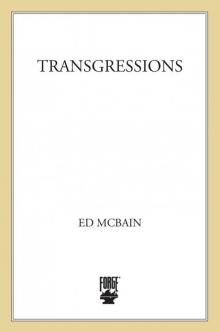 Transgressions, Volume 4
Transgressions, Volume 4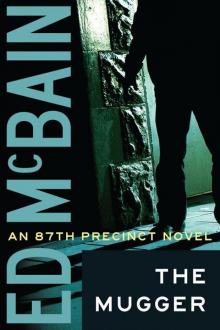 The Mugger
The Mugger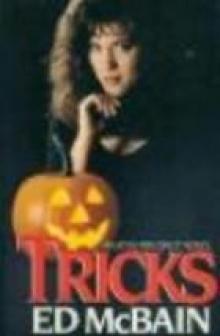 Tricks
Tricks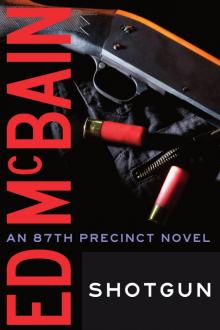 Shotgun (87th Precinct)
Shotgun (87th Precinct) Hail, Hail, the Gang's All Here!
Hail, Hail, the Gang's All Here!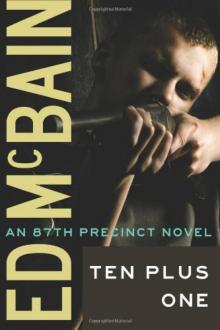 Ten Plus One
Ten Plus One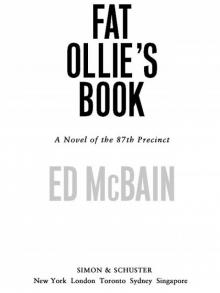 Fat Ollie's Book
Fat Ollie's Book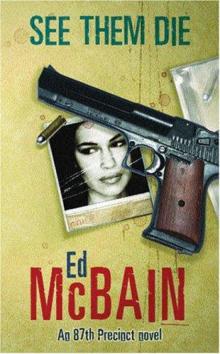 See Them Die
See Them Die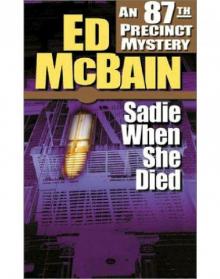 Sadie When She Died
Sadie When She Died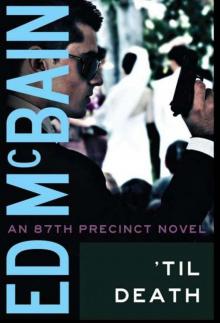 Til Death
Til Death Transgressions Vol. 3: Merely Hate/Walking the Line/Walking Around Money
Transgressions Vol. 3: Merely Hate/Walking the Line/Walking Around Money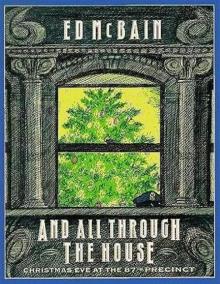 And All Through the House
And All Through the House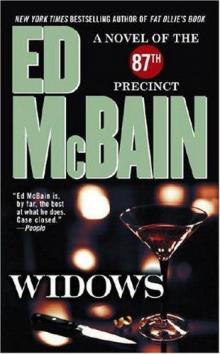 Widows
Widows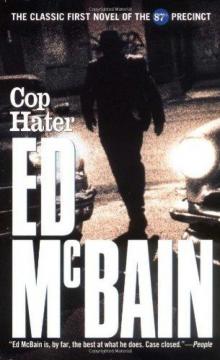 Cop Hater
Cop Hater Transgressions
Transgressions